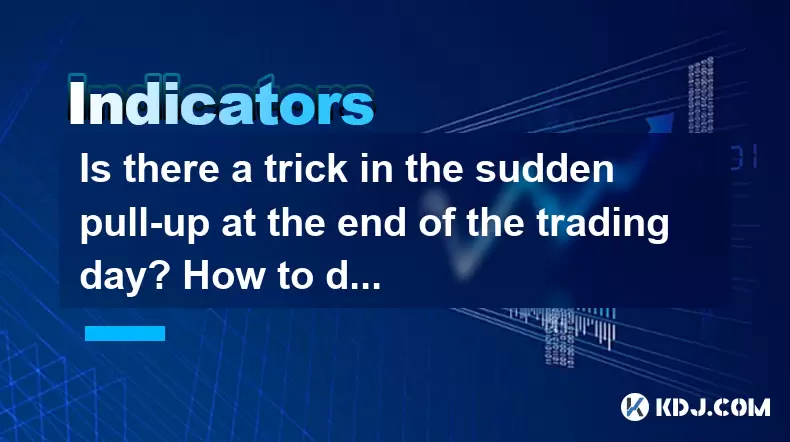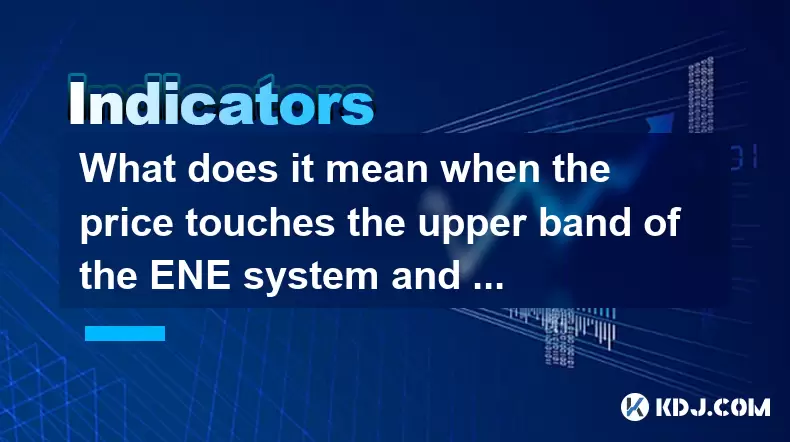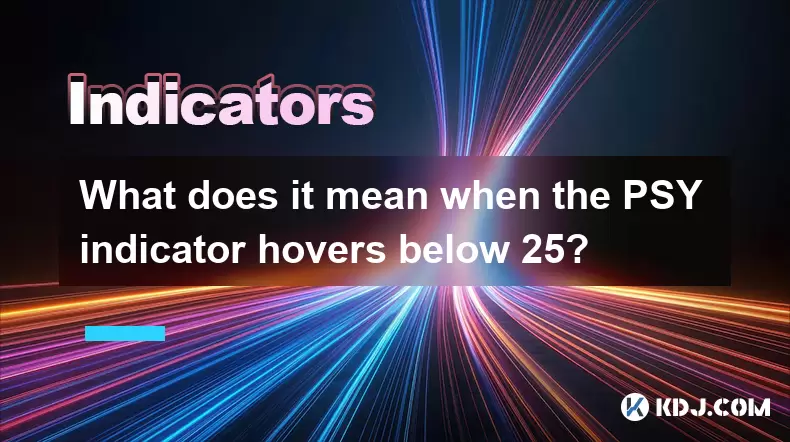-
 Bitcoin
Bitcoin $116700
0.48% -
 Ethereum
Ethereum $4213
6.27% -
 XRP
XRP $3.280
1.22% -
 Tether USDt
Tether USDt $1.000
0.02% -
 BNB
BNB $805.1
2.46% -
 Solana
Solana $180.2
2.65% -
 USDC
USDC $0.0000
0.02% -
 Dogecoin
Dogecoin $0.2412
8.50% -
 TRON
TRON $0.3356
-1.11% -
 Cardano
Cardano $0.8108
3.59% -
 Hyperliquid
Hyperliquid $43.89
8.53% -
 Chainlink
Chainlink $21.15
10.75% -
 Stellar
Stellar $0.4502
1.41% -
 Sui
Sui $3.935
4.69% -
 Bitcoin Cash
Bitcoin Cash $570.7
-1.75% -
 Hedera
Hedera $0.2636
3.28% -
 Avalanche
Avalanche $24.25
4.48% -
 Ethena USDe
Ethena USDe $1.001
0.03% -
 Litecoin
Litecoin $122.0
-0.08% -
 Toncoin
Toncoin $3.445
2.68% -
 UNUS SED LEO
UNUS SED LEO $8.979
-0.08% -
 Shiba Inu
Shiba Inu $0.00001379
6.73% -
 Uniswap
Uniswap $10.91
2.00% -
 Polkadot
Polkadot $4.106
5.39% -
 Dai
Dai $1.000
0.02% -
 Pepe
Pepe $0.00001227
9.07% -
 Bitget Token
Bitget Token $4.507
0.72% -
 Cronos
Cronos $0.1576
3.40% -
 Monero
Monero $272.0
-1.68% -
 Ethena
Ethena $0.7502
21.27%
Is there a trick in the sudden pull-up at the end of the trading day? How to deal with the low opening in the early trading?
Sudden pull-ups at day's end and low openings in early trading can be navigated with strategies like staying informed, using stop-loss orders, and technical analysis.
Jun 03, 2025 at 11:42 am

In the world of cryptocurrency trading, understanding market dynamics and patterns can significantly enhance your trading strategy. One of the intriguing phenomena traders often encounter is the sudden pull-up at the end of the trading day. Similarly, dealing with low openings in the early trading can be challenging yet manageable with the right approach. Let's delve into these topics to equip you with the knowledge and strategies needed to navigate these situations effectively.
Understanding the Sudden Pull-up at the End of the Trading Day
The sudden pull-up at the end of the trading day refers to a sharp increase in the price of a cryptocurrency just before the market closes. This phenomenon can be influenced by several factors, including institutional trading, news releases, and market manipulation.
Institutional trading plays a significant role in these pull-ups. Large investors and institutions often adjust their positions at the end of the day, leading to significant price movements. If these entities are buying, it can cause a sharp increase in price.
News releases can also trigger end-of-day pull-ups. If significant news related to a cryptocurrency is released near the end of the trading day, it can cause a rush of buying or selling, leading to volatile price movements.
Market manipulation is another factor to consider. Some traders may attempt to manipulate the market by executing large trades at the end of the day to close their positions at favorable prices.
To effectively deal with these pull-ups, traders need to stay informed about market news and institutional movements. Monitoring trading volumes and order books can also provide insights into potential end-of-day price movements.
Strategies to Handle Sudden End-of-Day Pull-ups
When facing a sudden pull-up at the end of the trading day, traders can employ several strategies to capitalize on or mitigate the impact of these movements.
Stay Informed: Keep an eye on news releases and market sentiment. Use tools like Google Alerts or cryptocurrency news apps to stay updated on any developments that could affect the market.
Monitor Trading Volumes: High trading volumes at the end of the day can indicate a potential pull-up. Use trading platforms that provide real-time volume data to make informed decisions.
Use Stop-Loss Orders: Setting stop-loss orders can help you limit losses if the price suddenly drops after a pull-up. Ensure your stop-loss levels are set at a point that balances potential losses with the likelihood of the price rebounding.
Avoid Overtrading: The end of the trading day can be volatile, and overtrading in response to sudden pull-ups can lead to significant losses. Stick to your trading plan and avoid making impulsive decisions based on short-term price movements.
Dealing with Low Openings in the Early Trading
A low opening in the early trading can be a source of concern for many traders. This occurs when the opening price of a cryptocurrency is lower than the previous day's closing price. Understanding the causes and developing strategies to handle these situations can help you navigate the market more effectively.
Market sentiment is a key driver of low openings. If the overall sentiment towards a cryptocurrency is negative, it can lead to a lower opening price. This sentiment can be influenced by news, social media, and broader market trends.
Overnight news can also cause low openings. If significant news related to a cryptocurrency is released after the market closes, it can affect the opening price the next day. Traders need to be aware of any developments that occur outside of trading hours.
Liquidity plays a role in low openings. If there is low liquidity at the opening of the market, it can lead to larger price swings, including lower openings.
Strategies to Handle Low Openings
When faced with a low opening in the early trading, traders can use several strategies to manage their positions and potentially benefit from the situation.
Assess Market Sentiment: Use tools like sentiment analysis software or social media monitoring to gauge the overall sentiment towards the cryptocurrency. Understanding the sentiment can help you decide whether to buy, sell, or hold your position.
Review Overnight News: Check for any significant news released after the market closed the previous day. This can help you understand the reasons behind the low opening and make more informed trading decisions.
Use Limit Orders: Placing limit orders can help you buy or sell at your desired price, even if the market opens lower than expected. This strategy allows you to control the price at which you enter or exit a position.
Diversify Your Portfolio: A diversified portfolio can help mitigate the impact of low openings in individual cryptocurrencies. By spreading your investments across different assets, you can reduce the risk associated with any single cryptocurrency.
Technical Analysis for Early Trading and End-of-Day Movements
Technical analysis can be a valuable tool for traders looking to navigate both sudden pull-ups at the end of the trading day and low openings in the early trading. By analyzing price charts and indicators, traders can identify patterns and trends that may help predict future price movements.
Candlestick Patterns: Pay attention to candlestick patterns that indicate potential reversals or continuations. For example, a bullish engulfing pattern at the end of the day could signal a potential pull-up, while a bearish harami at the opening might indicate a low opening.
Support and Resistance Levels: Identify key support and resistance levels on the price chart. These levels can act as barriers to price movements and help you anticipate potential pull-ups or low openings.
Moving Averages: Use moving averages to smooth out price data and identify trends. A crossover of short-term and long-term moving averages can signal potential price movements at the end of the day or at the opening.
Volume Indicators: Volume indicators like the On-Balance Volume (OBV) can help you understand the strength behind price movements. High volume at the end of the day or at the opening can indicate significant buying or selling pressure.
Risk Management in Volatile Market Conditions
Navigating sudden pull-ups at the end of the trading day and low openings in the early trading requires effective risk management. By implementing risk management strategies, traders can protect their capital and improve their chances of success in volatile market conditions.
Position Sizing: Determine the appropriate size of your positions based on your risk tolerance and account balance. Smaller position sizes can help limit potential losses during volatile market movements.
Stop-Loss Orders: Use stop-loss orders to automatically close your positions if the price moves against you. This can help you manage risk and protect your capital during sudden pull-ups or low openings.
Diversification: Diversify your portfolio across different cryptocurrencies and asset classes. This can help reduce the impact of adverse price movements in any single asset.
Emotional Discipline: Maintain emotional discipline and avoid making impulsive trading decisions based on short-term price movements. Stick to your trading plan and remain focused on your long-term goals.
Frequently Asked Questions
Q: Can sudden pull-ups at the end of the trading day be predicted?
A: While it's challenging to predict these pull-ups with certainty, traders can use technical analysis and monitor market news to identify potential signs of end-of-day price movements. High trading volumes and significant news releases can indicate a higher likelihood of a pull-up.
Q: How can I differentiate between a genuine market movement and manipulation during low openings?
A: Distinguishing between genuine market movements and manipulation can be difficult. Look for consistent patterns and corroborating news or events that support the price movement. Additionally, monitoring trading volumes and order book data can provide insights into whether the movement is driven by genuine market forces or potential manipulation.
Q: Are there specific cryptocurrencies more prone to sudden pull-ups and low openings?
A: Some cryptocurrencies with lower market caps and liquidity may be more susceptible to sudden pull-ups and low openings due to their vulnerability to market manipulation and significant price swings. However, these phenomena can occur across all cryptocurrencies, depending on market conditions and external factors.
Q: How important is it to have a trading plan when dealing with these market phenomena?
A: Having a well-defined trading plan is crucial when dealing with sudden pull-ups and low openings. A trading plan helps you maintain discipline, manage risk, and make informed decisions based on your analysis rather than emotional reactions to market movements.
Disclaimer:info@kdj.com
The information provided is not trading advice. kdj.com does not assume any responsibility for any investments made based on the information provided in this article. Cryptocurrencies are highly volatile and it is highly recommended that you invest with caution after thorough research!
If you believe that the content used on this website infringes your copyright, please contact us immediately (info@kdj.com) and we will delete it promptly.
- Trump, Crypto Vehicle, and WLFI Tokens: A New York Minute on the Latest Buzz
- 2025-08-10 00:30:12
- Wheat Penny Fortune: Unearthing Valuable Coins in Your Pocket Change
- 2025-08-10 00:35:19
- AI Coin Mania: Dubai Millionaires Eye 20x Gains!
- 2025-08-09 23:10:12
- ChatGPT's Hot Takes: Meme Coins to Buy Now for a Wild 2025!
- 2025-08-09 23:10:12
- Jurassic Park Vibes in Your Pocket: The Colourful Canadian Coin Featuring a Dinosaur Eye
- 2025-08-09 23:50:12
- Altcoins on the Radar: VeChain, Ethereum, and the Shifting Crypto Landscape
- 2025-08-09 23:50:12
Related knowledge

What does it mean when the price is trading above the SAR indicator but the red dots are densely packed?
Aug 09,2025 at 11:49pm
Understanding the SAR Indicator and Its Visual SignalsThe SAR (Parabolic Stop and Reverse) indicator is a technical analysis tool used primarily to de...

What does it mean when the MACD histogram continues to shorten but the price reaches a new high?
Aug 09,2025 at 09:29pm
Understanding the MACD Histogram and Its ComponentsThe MACD (Moving Average Convergence Divergence) indicator is a widely used technical analysis tool...

What does it mean when the Triple Moving Average (TRIX) turns downward but the price doesn't fall?
Aug 09,2025 at 12:42pm
Understanding the Triple Moving Average (TRIX) IndicatorThe Triple Moving Average, commonly known as TRIX, is a momentum oscillator designed to filter...

What does it mean when the price touches the upper band of the ENE system and then falls back?
Aug 10,2025 at 12:42am
Understanding the ENE Indicator StructureThe ENE (Envelope) indicator is a technical analysis tool used in cryptocurrency trading to identify potentia...

What does it mean when the Williams' oscillator repeatedly hits bottoms but fails to rebound?
Aug 09,2025 at 09:28am
Understanding the Williams %R OscillatorThe Williams %R oscillator, developed by Larry Williams, is a momentum indicator used in technical analysis to...

What does it mean when the PSY indicator hovers below 25?
Aug 10,2025 at 01:14am
Understanding the PSY Indicator in Cryptocurrency TradingThe PSY indicator, also known as the Psychological Line indicator, is a momentum oscillator u...

What does it mean when the price is trading above the SAR indicator but the red dots are densely packed?
Aug 09,2025 at 11:49pm
Understanding the SAR Indicator and Its Visual SignalsThe SAR (Parabolic Stop and Reverse) indicator is a technical analysis tool used primarily to de...

What does it mean when the MACD histogram continues to shorten but the price reaches a new high?
Aug 09,2025 at 09:29pm
Understanding the MACD Histogram and Its ComponentsThe MACD (Moving Average Convergence Divergence) indicator is a widely used technical analysis tool...

What does it mean when the Triple Moving Average (TRIX) turns downward but the price doesn't fall?
Aug 09,2025 at 12:42pm
Understanding the Triple Moving Average (TRIX) IndicatorThe Triple Moving Average, commonly known as TRIX, is a momentum oscillator designed to filter...

What does it mean when the price touches the upper band of the ENE system and then falls back?
Aug 10,2025 at 12:42am
Understanding the ENE Indicator StructureThe ENE (Envelope) indicator is a technical analysis tool used in cryptocurrency trading to identify potentia...

What does it mean when the Williams' oscillator repeatedly hits bottoms but fails to rebound?
Aug 09,2025 at 09:28am
Understanding the Williams %R OscillatorThe Williams %R oscillator, developed by Larry Williams, is a momentum indicator used in technical analysis to...

What does it mean when the PSY indicator hovers below 25?
Aug 10,2025 at 01:14am
Understanding the PSY Indicator in Cryptocurrency TradingThe PSY indicator, also known as the Psychological Line indicator, is a momentum oscillator u...
See all articles

























































































